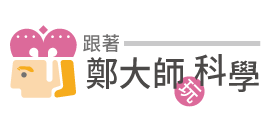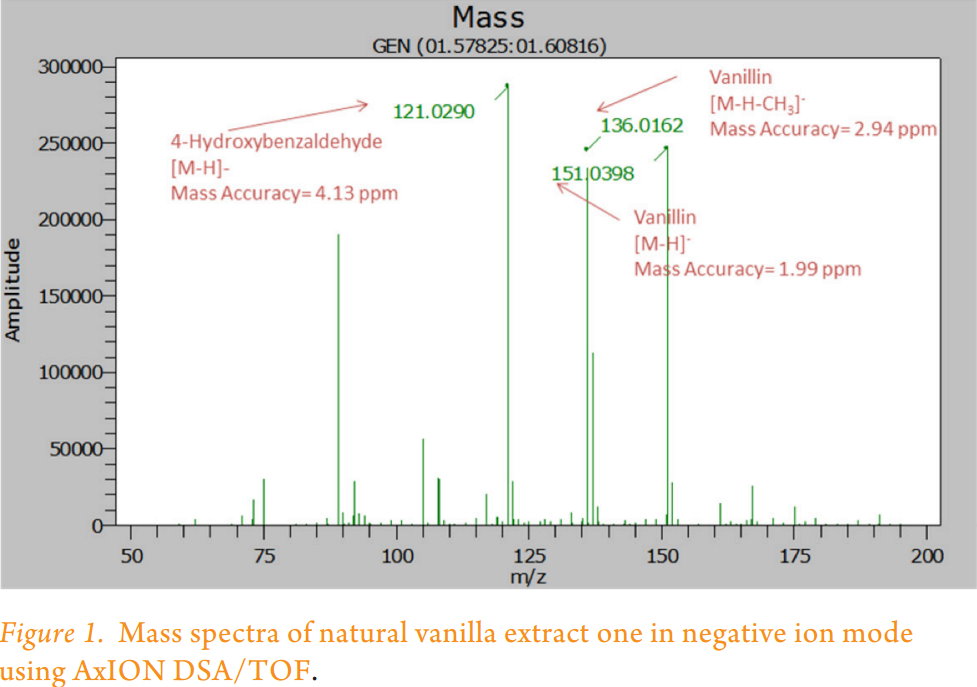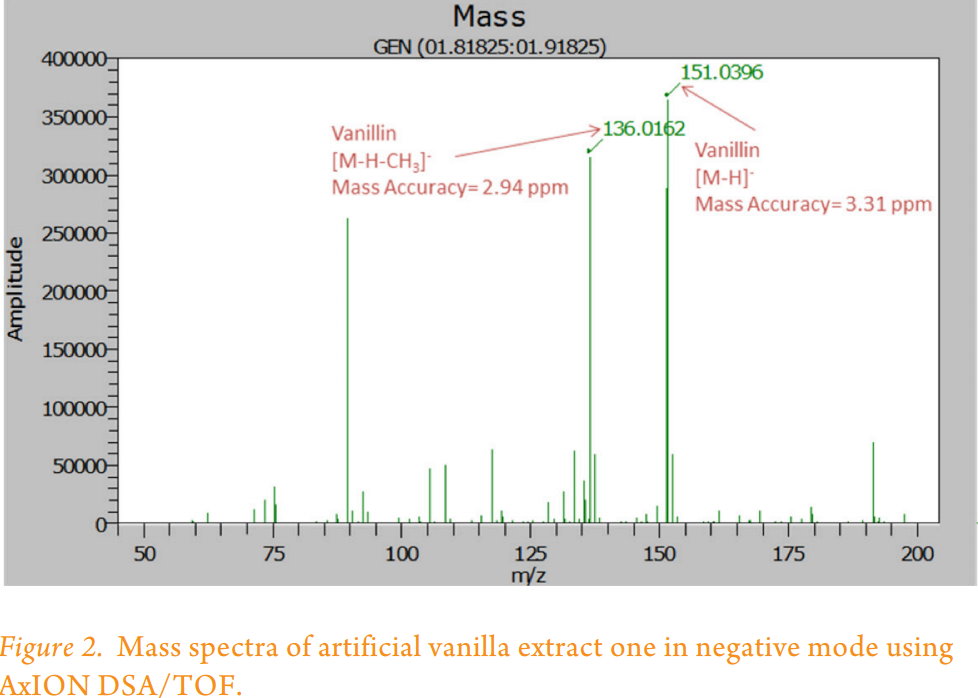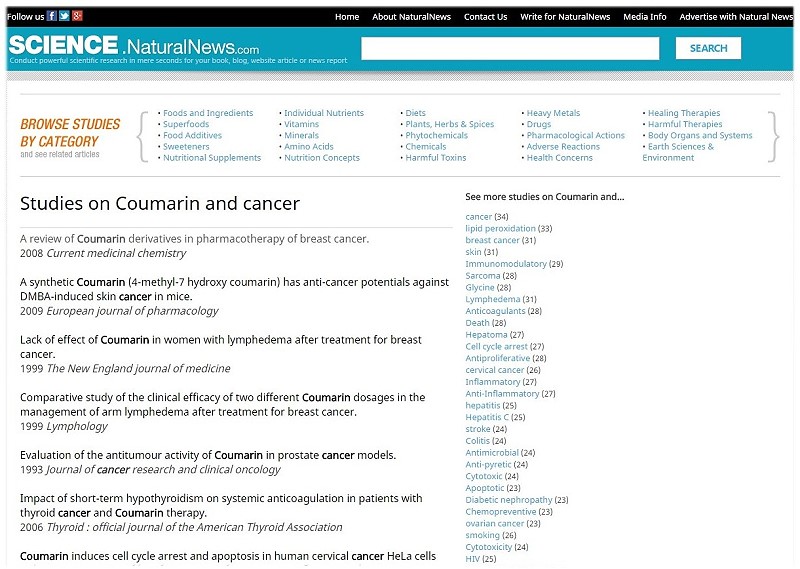玩過烘焙的人對這個香草精應該不陌生,它常用來製作香草口味的點心或是去除蛋腥味的用途。高檔一點的甜點會使用香草豆莢來製作,不過價格不便宜(微風一根豆莢曾賣到90元),因此大部分的麵包店都是使用香草精。分為天然香草精(Natural)與人工香草精(Artificial)兩種,二者價格差異頗大,前者約是後者的5倍。我在白鐵號學烘焙時,黃師傅是教我們使用蘭姆酒/伏特加浸泡豆莢來萃取(照片中的香草豆莢承蒙公視胡導演出外景時從馬達加斯加特地購回相贈)
至於天然香精與人工香精的成分分析如圖1與圖2,二者都含有兩種主成分Vanillin[M-H-CH3]– 、 Vanillin[M-H]–,唯一的差別是人工香精少了自然香精中的4-羥基苯甲醛(香草醛的前驅物質),看到彼此竟然有如此類似的組成,只能說現代的食品化工技術實在太厲害了。至於我以香草豆莢浸泡伏特加三個月後所萃取出來的香草精 VS. 左邊這一瓶購自烘焙材料店的香草精,說真的我還真分不出二者所做出來的餅乾風味有何差異。
重點來了,或許大家比較關心的不是價格或是風味上的差異,而是人工香草精是否有害健康?因為西點麵包店常使用的是一加侖裝的人工香草精,這種大包裝的便宜香草精或許有可能會混進少許香豆素這種增香劑,譬如不久前某知名紅茶連鎖店就被驗出 飲料含有香豆素。香豆素是一種重要的香料,常用作定香劑來配製香水和香精,也當作飲料的增香劑,它到底會不會具有致癌性呢?
如果現在來做個問卷,相信絕大多數的人會說”有”,因為新聞都是這麼報。但是來看一篇由 science.naturalnews.com 所彙整的資料《Studies on Coumarins and Cancer》:
A review of Coumarin derivatives in pharmacotherapy of breast cancer.
2008 Current medicinal chemistry
A synthetic Coumarin (4-methyl-7 hydroxy coumarin) has anti-cancer potentials against DMBA-induced skin cancer in mice.
2009 European journal of pharmacology
Lack of effect of Coumarin in women with lymphedema after treatment for breast cancer.
1999 The New England journal of medicine
Evaluation of the antitumour activity of Coumarin in prostate cancer models.
1993 Journal of cancer research and clinical oncology
Impact of short-term hypothyroidism on systemic anticoagulation in patients with thyroid cancer and Coumarin therapy.
2006 Thyroid : official journal of the American Thyroid Association
Coumarin induces cell cycle arrest and apoptosis in human cervical cancer HeLa cells through a mitochondria- and caspase-3 dependent mechanism and NF-kappaB down-regulation.
2007 In vivo (Athens, Greece)
A Coumarin derivative (RKS262) inhibits cell-cycle progression, causes pro-apoptotic signaling and cytotoxicity in ovarian cancer cells.
2011 Investigational new drugs
Effects of Coumarin and 7OH-coumarin on bcl-2 and Bax expression in two human lungcancer cell lines in vitro.
2005 Cell biology international
7-Diethylamino-3(2′-benzoxazolyl)-coumarin is a novel microtubule inhibitor with antimitotic activity in multidrug resistant cancer cells.
2009 Biochemical pharmacology
Antitumour activity of Coumarin in prostate and mammary cancer models.
1994 Journal of cancer research and clinical oncology
Low-molecular-weight heparin versus a Coumarin for the prevention of recurrent venous thromboembolism in patients with cancer.
2003 The New England journal of medicine
Antitumour activity of Coumarin in prostate and mammary cancer models.
1994 Journal of cancer research and clinical oncology
Coumarin-based inhibitors of human NAD(P)H:quinone oxidoreductase-1. Identification, structure-activity, off-target effects and in vitro human pancreatic cancertoxicity.
2007 Journal of medicinal chemistry
An in vitro investigation of the induction of apoptosis and modulation of cell cycle events in human cancer cells by bisphenanthroline-coumarin-6,7-dioxacetatocopper(II) complex.
2007 Chemico-biological interactions
Cancer chemopreventive activity of the prenylated coumarin, umbelliprenin, in vivo.
2009 European journal of cancer prevention : the official journal of the European cancerPrevention Organisation (ECP)
Synthesis and antiproliferative activity of coumarin-estrogen conjugates against breastcancer cell lines.
2009 Letters in drug design & discovery
Prophylaxis of radiogenic sialadenitis and mucositis by coumarin/troxerutine in patients with head and neck cancer–a prospective,randomized, placebo-controlled, double-blind study.
2001 The British journal of oral & maxillofacial surgery
Novel coumarin-3-(N-aryl)carboxamides arrest breast cancer cell growth by inhibiting ErbB-2 and ERK1.
2005 Bioorganic & medicinal chemistry
Randomized comparison of low molecular weight heparin and Coumarin derivatives on the survival of patients with cancer and venous thromboembolism.
2005 Journal of clinical oncology : official journal of the American Society of Clinical Oncology
Studies on cancer chemoprevention by traditional folk medicines XXIV. Inhibitory effect of a Coumarin derivative, 7-isopentenyloxycoumarin, against tumor-promotion.
2002 Biological & pharmaceutical bulletin
Studies on coumarins and coumarin-related compounds to determine their therapeutic role in the treatment of cancer.
2004 Current pharmaceutical design
內容幾乎都是提到香豆素的好處,不外乎抑制癌細胞的生長或是具有防癌的效果,其中還不乏出自知名的學術期刊。所以這到底是怎麼一回事?為何新聞總是說香豆素會致癌?應該是治癌才對吧?
這得從2003年引起轟動的 那篇學術論文 談起,由於齧齒動物會將香豆素代謝為”3,4-環氧香豆素”,這種代謝產物可引發內出血因而造成死亡。但是香豆素在不同物種間的代謝途徑不同,人類則是將香豆素代謝成毒性較低的”7-羥基香豆素”,這種代謝物在 這篇文章中 提及”may cause liver damage in some sensitive people”,因此香豆素對人類的毒性較低。至於癌症,動物實驗確實發現長期服用香豆素會引發齧齒動物之癌症,不過人體試驗目前則無相關報導,反倒是能抑制某些癌細胞的增殖。美國OSHA (Occupation Safety and Health Administration)於是發布香豆素僅有引發老鼠肺癌之疑慮,而尚不能歸類為引發人類癌症之致癌物,IARC (International Agency for Research on Cancer)亦認為香豆素非屬人類致癌物。所以香豆素會致癌應是媒體誤解了原先的論文,以致於以訛傳訛從2003年誤傳到現在還是這麼說,正確的說法應該是”香豆素具有可能導致某些易感性族群的肝臟危害”。其實許多植物都含有香豆素,譬如:草莓、櫻桃、肉桂、當歸、薑、八角、肉荳蔻、黑胡椒…,至於國內法規規範香豆素不得添加於任何食品,而飲料中則因使用天然香料致有香豆素之檢出時,飲料中(並非乾燥茶包)之香豆素含量應在 2 ppm 以下。
結論:天然香草精與人工香草精的成分差異不大,風味亦十分接近,因此二者很難由味道來判別區分。以冰淇淋為例,倘若外觀上有黑色種子微粒,即可確定是使用高檔的香草豆莢所製作。





